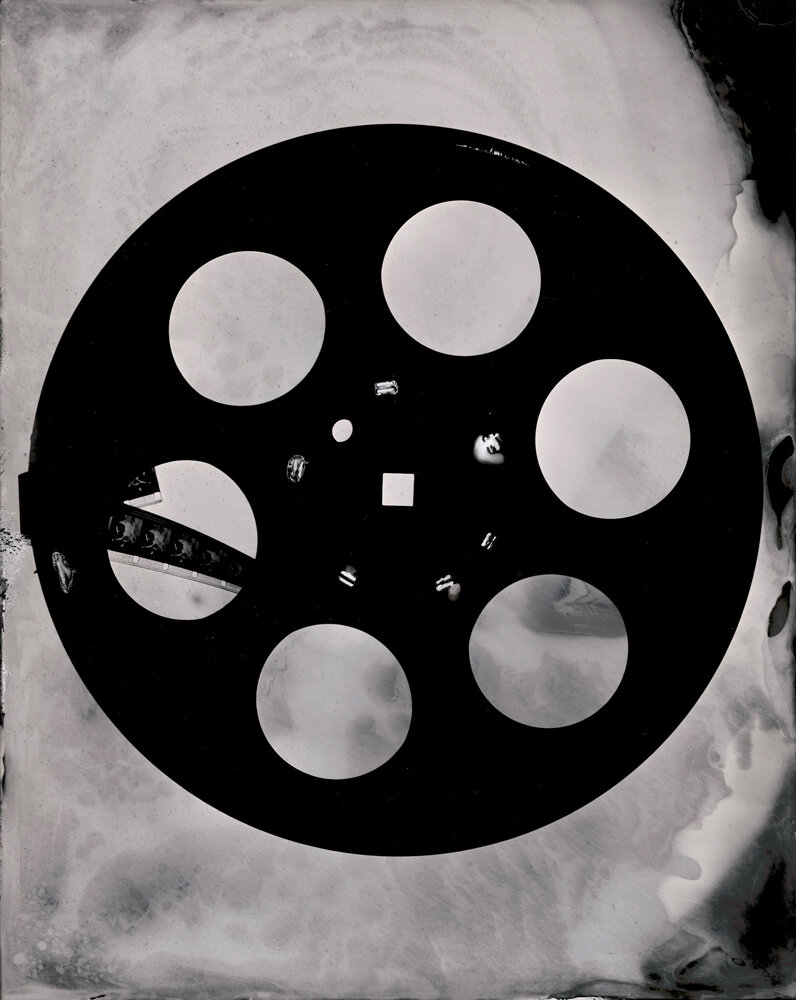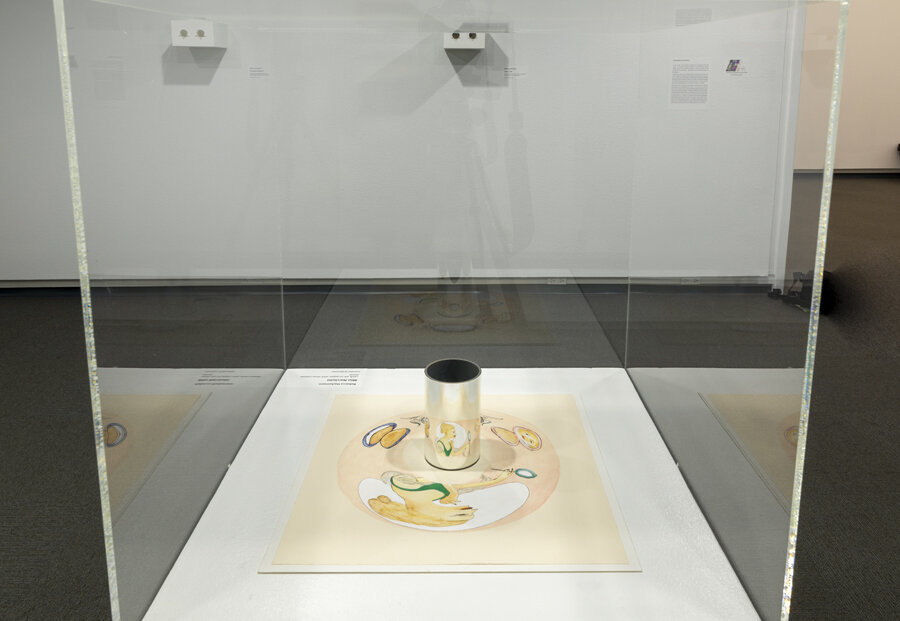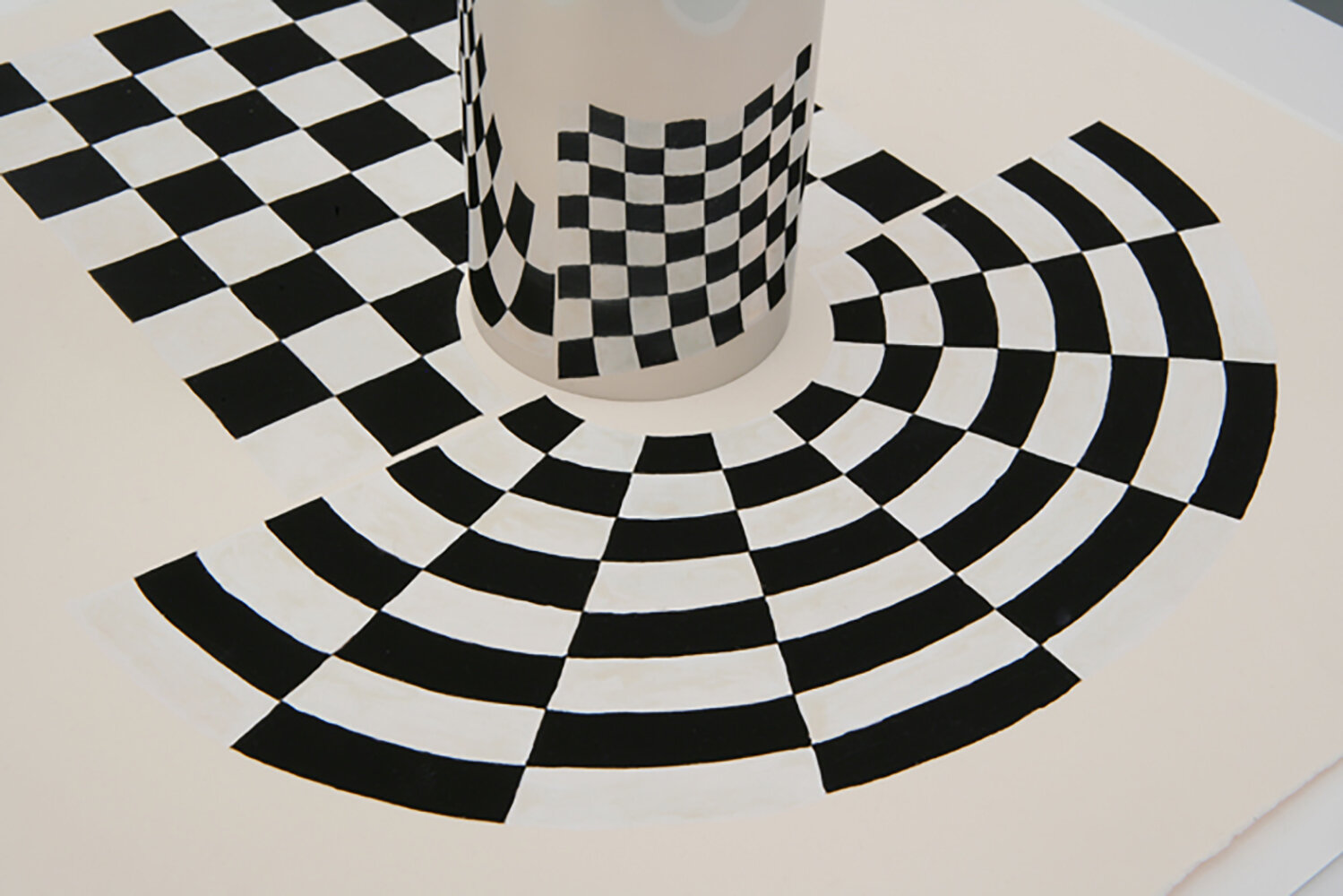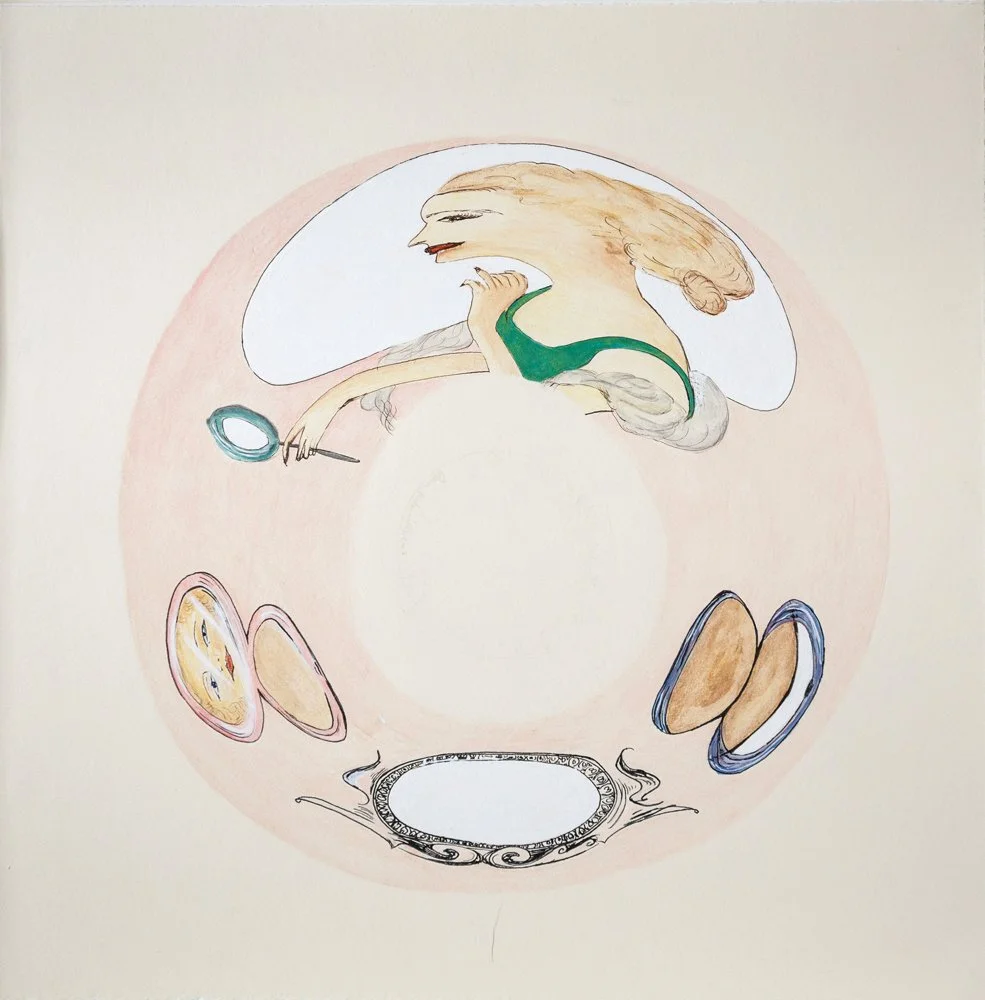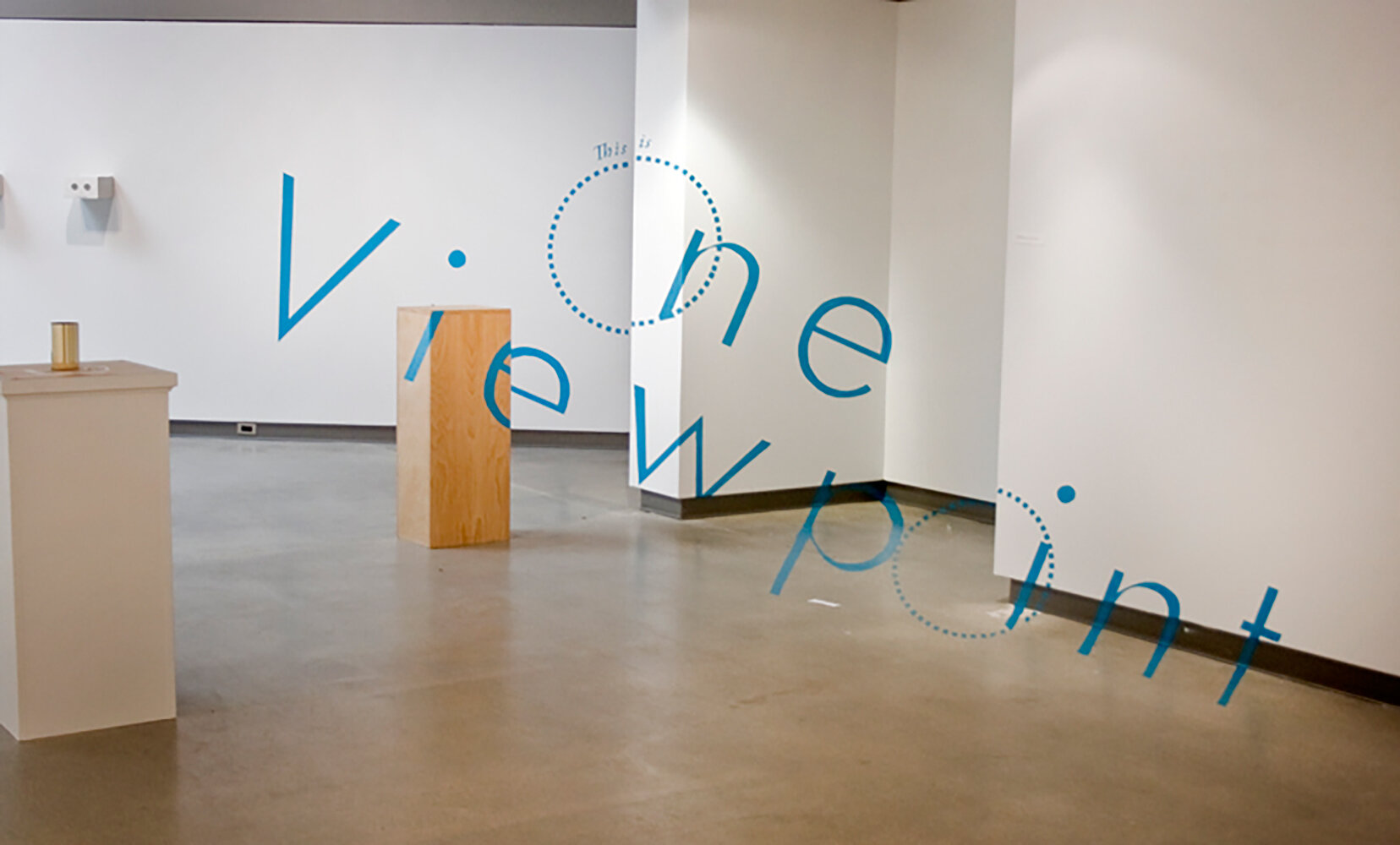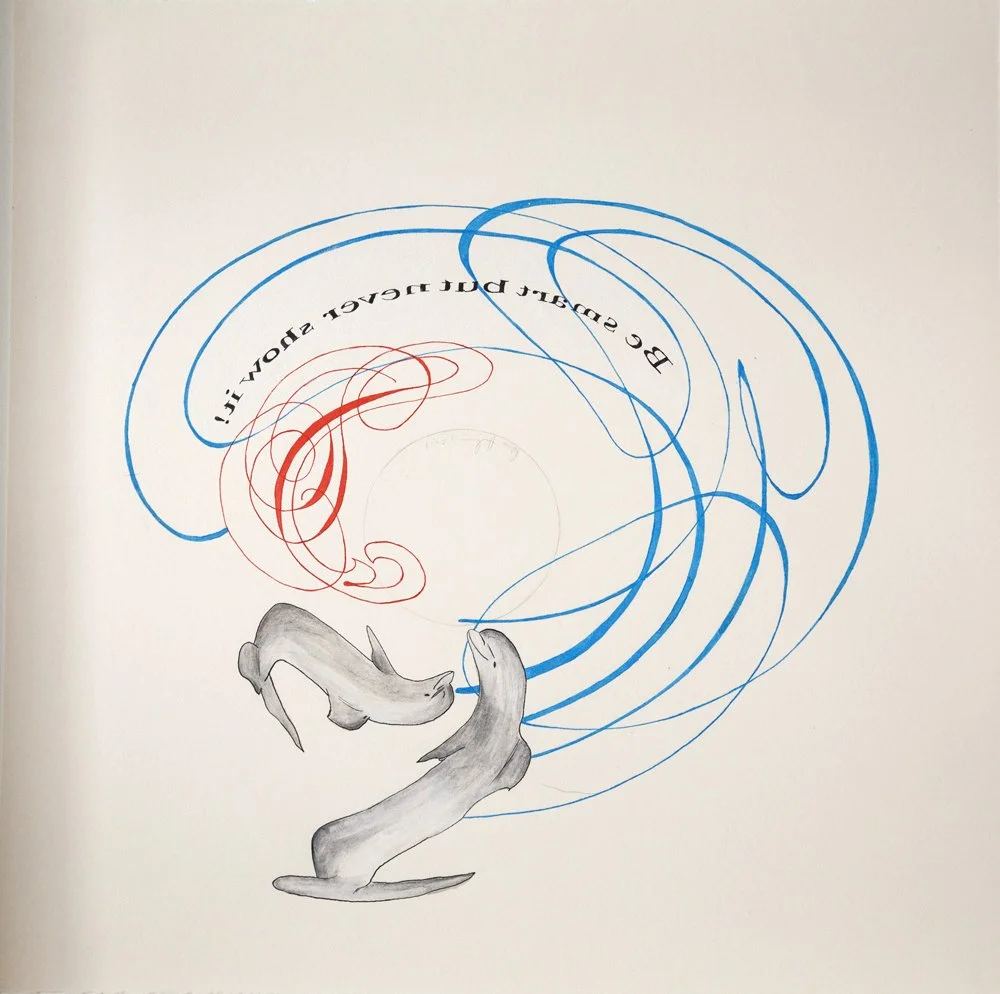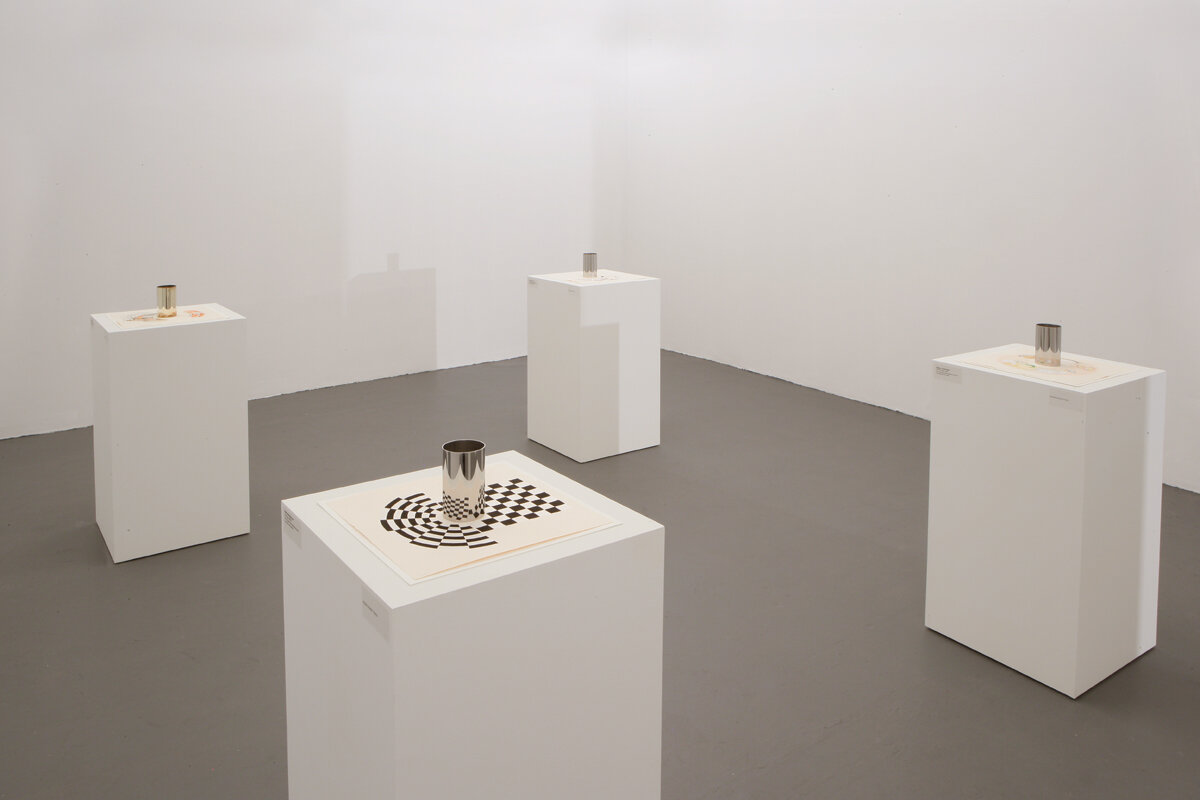
16”x 16” in displayed on pedestal with silvered cylindrical mirror
Rebecca Hackemann’s doubled anamorphic drawings explore cultural and historical ideas surrounding the mirror and its reflection. They incorporate the cylindrical mirror as an intrinsic part of their meanings. Using fairy tales, psychoanalytical and historical references such as the (secret) camera obscura of painters, Alice in Through the Looking Glass (sequel to Alice in Wonderland), Jacques Lacan’s mirror phase and the myths of Narcissus, 360º anamorphic ink drawings are created. The viewer walks around the drawing which sits horizontally on a pedestal with the cylindrical mirror at the center. Another related drawing is on the other side – sometimes the mirror itself becomes part of the meaning of the drawing, for example in Alice’s Looking Glass House the anamorphic mirror becomes a metaphor for the Looking Glass House, as Alice steps into the mirror on one side and steps out on the other.
As Installation, painted on walls, variable dimensions
In this instance text is painted on the gallery wall, which is ‘decoded’ by the viewer standing on n “x” in the floor in order to p=be positioned in the space to read the text See images below whereby the text read “One Viewpoint”.
T E C H N I C A L
An anamorphic drawing or painting involves a technique that gives a distorted image of the subject when seen from the usual viewpoint, but when viewed from a particular angle or reflected in a curved mirror shows it in true proportion. These anamorphic drawings use a cylindrical shaped mirror placed at the center of the drawing, which ‘decodes’ the morphed image on the paper.
Historically it was a curious by-product of the discovery of perspective in the 14th – 15th century and was regarded as a display of technical virtuosity. The first examples appear in Leonardo da Vinci's notebooks.
By the 18th Century it was embraced by many more artists and physicists at the time of The Enlightenment and in the 19th century they were used for amusement, in physics and as optical curiosities. The cylindrical mirrors later led to the development and use of mirrors in telescopes.
Installation view at Hunter College Times Square Gallery, New York City, ca. 2009
Miss Narcisstist, 15 x 15 in., at Springfield Art Museum, 2021/2
Springfield Art Museum
Hunter College Galleries, New York
The Grid, 15 x 15 x 5"
Miss Narcissist, 15 x 15 x 5", cylindrical mirror
Ceci n'est pas un cigar, 15" x 15" 5" in.
The Looking Glass House
The Secret Knowledge
Echo and Narcissus in the Digital Age, 15 x 15" in x 5" in
Echo and Narcissus in the Digital Age, 15 x 15" in x 5" in
The Disappearance of the Bees
The Queen of Hearts, anamorphic drawing
Alice and the Fly Agaric Mushroom
One Viewpoint, Anamorphic Installation
One Viewpoint, Anamorphic Installation
